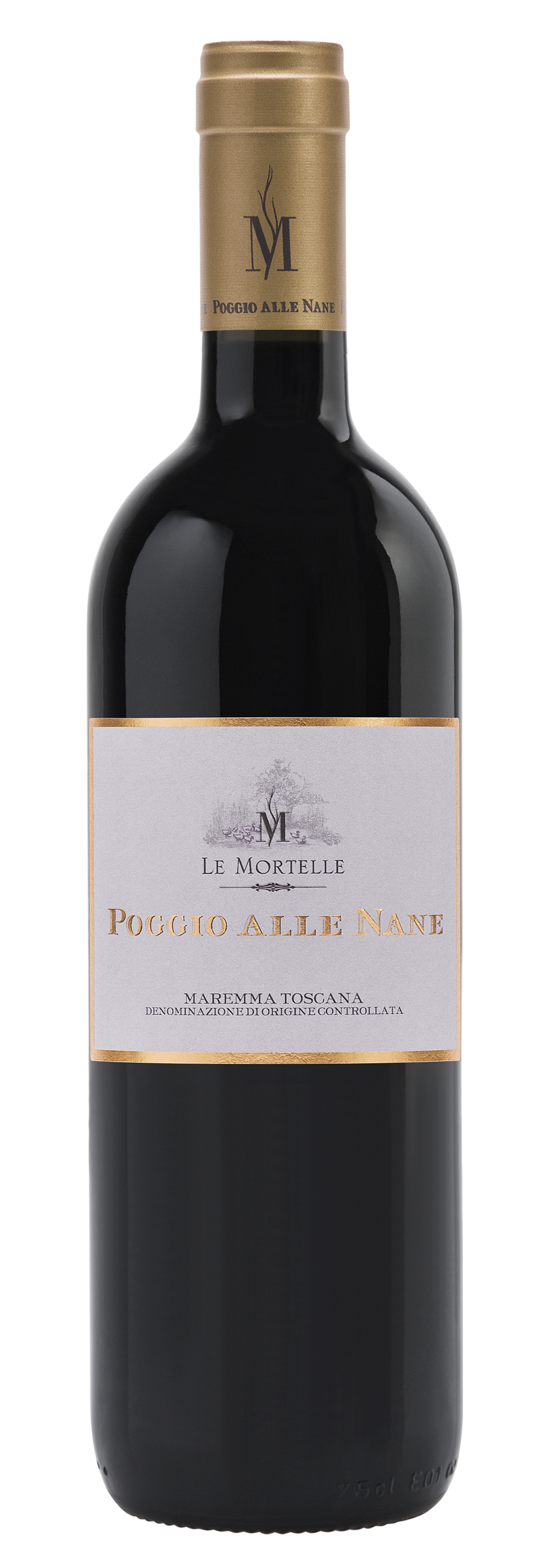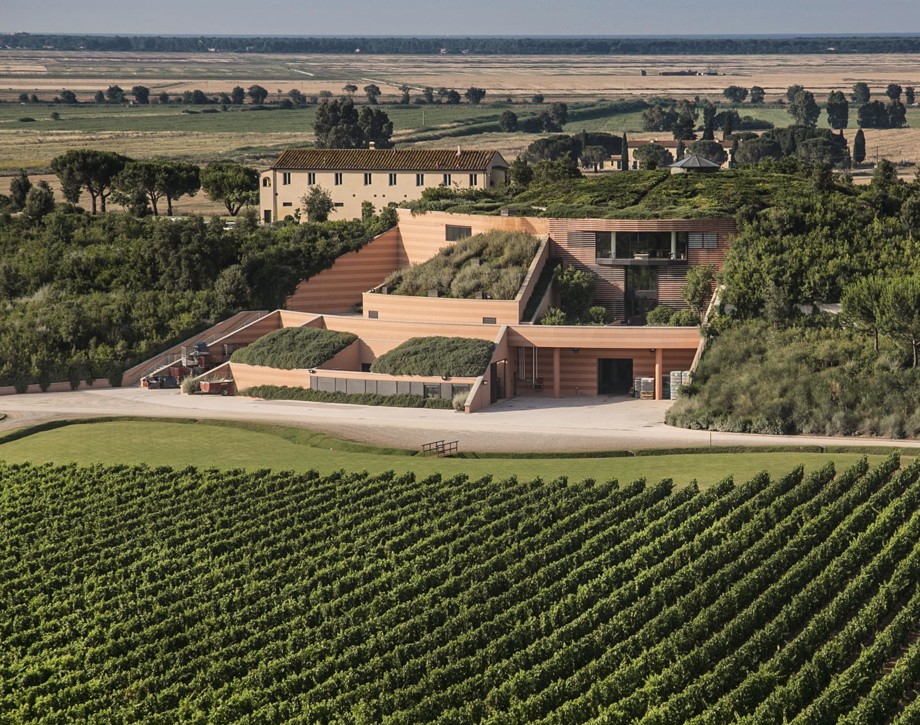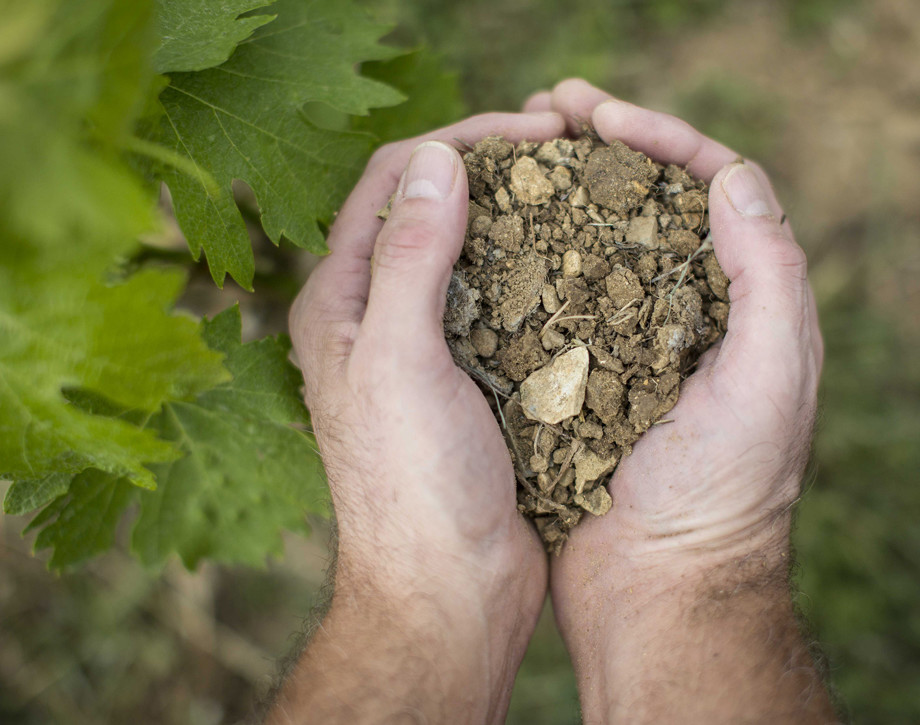Poggio alle Nane 2015
Climate
The 2015 vintage was characterized by a winter with frequent rainfall which assisted in creating useful reserves of groundwater in the soil. The favorable climatic conditions of the springtime guaranteed a regular flowering and bud set. The summer, reasonably warm and dry, favored an excellent ripening in the hillside vineyards where the Poggio della Nane grapes are grown. The Cabernet Franc was picked in late September, while the Cabernet Sauvignon harvest took place during the first week of October and that of the Carménère immediately afterwards.
Vinification
The grapes, carefully selected and hand-picked into small packing cases, were then given a further selection on sorting tables before destemming and a soft pressing. The must descended by gravity flow into conical stainless steel tanks where it then fermented. The period of skin contact lasted 20 days at a temperature held to 82° Fahrenheit (28° centigrade). The malolactic fermentation, which took place in small oak barrels, was followed by an aging period of approximately 16 months in 60 gallon French oak barrels.
Tasting Notes
An intense ruby red in color, the 2015 Poggio alle Nane is characterized by a complex and elegant bouquet. The first sensations, those of vanilla and sweet paprika, are fully integrated into the notes of berry fruit, particularly blackberries, and the hints of Mediterranean herbs and lavender. On the palate, the wine is both structured and silky in texture. The finish, balanced and persistent, offers notes of chocolate, blueberries, and liquorice.
Awards
James Suckling 93/100 USA

The Wine
Poggio alle Nane is a blend of the finest Cabernet Franc, Cabernet Sauvignon and a small percentage of Carménère grapes that express the unique terroir of one of the estate’s very best vineyards. Poggio alle Nane is a wine of great aromatic complexity with an elegant tannic structure.

Grown in an area with Great Potential
Poggio alle Nane comes from a winegrowing area well known for its production of high quality wines, an area in which both Cabernet and Carménère best express their characteristics.
The Name
Poggio alle Nane’s name comes from the area where its vines grow. Duck breeding farms once existed and the name “Nane” is local dialect for duck. The vineyards extend from the hillside to the lake that are still part of the property.
Climate
The 2021 growing season began with mild winter weather and average rainfall that provided generous groundwater reserves in the vineyards, vital for the beginning of the growth cycle. Spring started out cold causing a slight delay in bud break and bloom. The summer months were hot and dry, optimal for ensuring a perfect ripening phase with whole, healthy fruit. The grape harvest got underway the third week of September with Cabernet Franc, able to impart an elegant tannic structure, then continued one week later with Cabernet Sauvignon with distinct aromas of ripe red fruit. The last variety to be harvested was Carménère at the very beginning of October with grapes that gave complexity and spicy aromas.
Vinification
Grape clusters were carefully selected, and hand harvested into crates. The berries underwent a second selection on sorting tables before destemming and gentle crushing. The must was transferred by gravity flow into truncated stainless-steel tanks where alcoholic fermentation took place at a controlled temperature of 28 °C (82 °F) and maceration on the skins for a period of approximately 20 days. The wine then went into barriques where malolactic fermentation took place, followed by aging in French oak for 16 months.
Historical Data
The Le Mortelle estate is located in the heart of the Tuscan Maremma, a mere few miles from the town of Castiglione della Pescaia in an extraordinarily fascinating position both in terms the nature which surrounds it and the history of the site. The Antinori family has always been present in the area - a property act of the year 1863 mentions among their possession Poggio Franco, one of the estate’s finest vineyards, along with other parcels of land. The Antinori, ever since 1999, has worked on the vineyards and the cellar with the firm conviction that the area, an emerging one in the overall panorama of Italian wine, has a major potential for the production of fine wine and that here it would be possible to express the characteristics both of the territory and the varieties to be cultivated. The property extends over a total of some 675 acres, over 425 of which are planted to vines, first Cabernet Sauvignon and Cabernet Franc, then more recent additions of such white grapes as Viognier, Ansonica, and Vermentino together a small amount of Carménère. The soil, of medium texture, is composed principally of clay and silica and is, in certain parts, rather rocky as well. Poggio alle Nane is a blend of the finest Cabernet Franc, Cabernet Sauvignon and a small percentage of Carménère grapes that express the unique terroir of one of the estate’s very best vineyards. Poggio alle Nane is a wine of great aromatic complexity with an elegant tannic structure.
Tasting Notes
Poggio alle Nane 2021 is a deep ruby red color. Intense on the nose with great complexity, it presents notes of black currants and ripe blackberries in perfect balance with floral and balsamic aromas of eucalyptus and violets. The bouquet is completed by delicate spicy notes and hints of Mediterranean herbs. The mouth filling palate has excellent structure and elegant tannins. Remarkable persistence on the finish, defined by pleasant aromas of tobacco and dark chocolate.

Fattoria Le Mortelle
The Mortelle estate is in the heart of Maremma in Tuscany, near the town of Castiglione della Pescaia set in an extraordinary and fascinating position both for the territory’s unparalleled natural beauty and its historical heritage and culture. The Antinori family has been part of this territory for generations. Evidence of ownership of land in this area is recorded on a property deed dated 1863. It states their ownership of Poggio Franco, one of the best vineyards on the estate, together with other parcels of land. Since 1999, when the property was acquired, the family has dedicated their efforts to improving the vineyards and building the new winery with the firm belief that this area, slowly emerging on the Italian viticultural horizon, has great potential for the production of high quality wines. Varieties grown in this area can fully express their own characteristics as well as the exceptional qualities of the terroir. The property extends over an area of 270 hectares (667 acres) 170 of which (420 acres) are planted with vineyards of Cabernet Sauvignon, Cabernet Franc and other more recently planted vineyards with white grape varieties such as Vermentino, Ansonica, Viognier and a small parcel of Carménère. The soil is of medium consistency, sandy and loamy composed of clay and silica and in some parts of the estate is rich in rocky deposits.

Soil
Sandy loamy soil, predominantly siliceous-clay composition with abundant fine gravel.
















